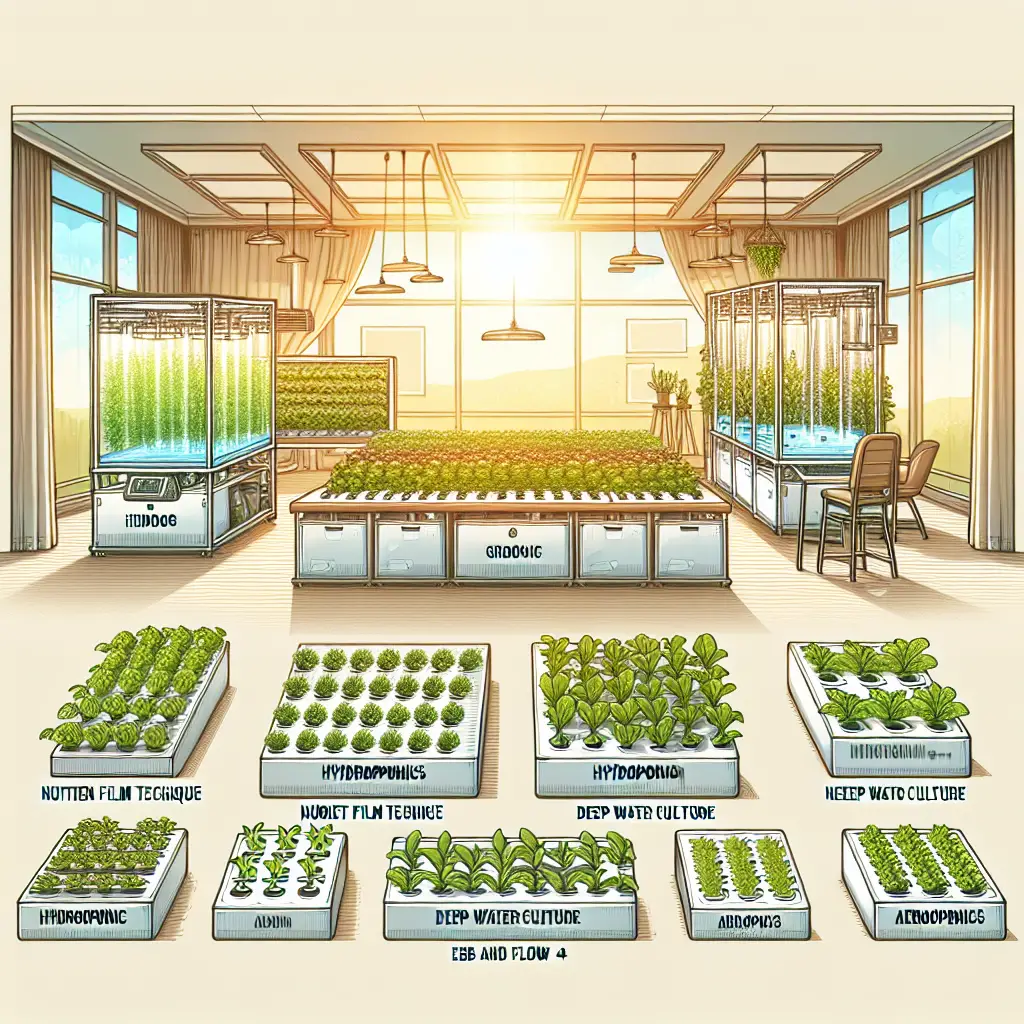South Dakota’s Garden Warnings: Troublesome Flora
Updated April 15, 2024 at 8:58 am

Understanding Troublesome Flora in South Dakota
- Pet Friendly: Some species can be toxic to pets. Always verify whether a plant is safe before introducing it to a garden with animals.
- Light Requirements: Varying from full sun to partial shade, take note of each plant’s unique needs for optimal growth.
- Watering: Over or under-watering can lead to plant stress, making them more susceptible to pests and diseases.
- Humidity: South Dakota’s climate can be dry, so consider the humidity needs of your plants to keep them healthy.
- Temperature: Be aware of the hardiness zone and temperature preferences of plants to avoid cold or heat damage.
- Difficulty: Some invasive species can be challenging to control. Know the difficulty level to manage expectations and strategies.
What Are the Most Invasive Plants in South Dakota Gardens?
In South Dakota, gardeners need to be vigilant about invasive plants that can quickly overrun native landscapes. One such culprit is the Leafy Spurge (Euphorbia esula), which is not only hard to eradicate but its milky sap can irritate skin and is toxic to cattle.
Another aggressive plant is Canada Thistle (Cirsium arvense). This spiky nuisance is a perennial weed that spreads rapidly through its root system and can be a real pain to control.
How to Identify Leafy Spurge in Your Garden
Leafy Spurge is identifiable by its small, yellowish-green flowers and leaves arranged in pairs or whorls. It grows up to 3 feet in height and its presence is a warning sign as it displaces native vegetation and reduces biodiversity.
If Leafy Spurge has taken root in your garden, act quickly. A recommended product is the herbicide Milestone, reputed for its effectiveness against broadleaf weeds while being gentler on grasses. Let’s take a closer look:
Product Spotlight: Milestone Herbicide
Milestone is a selective herbicide praised for its ability to manage tough weeds like Leafy Spurge. According to users, it’s user-friendly and provides long-lasting control with minimal impact on non-target plants.
However, there are some considerations. While Milestone is lauded for not harming grasses, some sensitive ornamentals may be at risk. Use with care and always read label instructions.
Pros
- Effective against a range of broadleaf weeds
- Long-lasting control with one application
Cons
- Might be harmful to sensitive ornamental plants
- Requires careful application to avoid non-target species
Find This and More on Amazon
Canada Thistle Control: Strategies That Work
To beat Canada Thistle, an integrated approach is key. Regular mowing and cultivation can weaken the plant but combining these methods with effective herbicides like Ortho GroundClear Vegetation Killer will drastically improve your odds.
Ortho GroundClear is known for knocking down weeds to the root, which is crucial in battling the deep and extensive root system of Canada Thistle.
Delving Into Ortho GroundClear Vegetation Killer
Consistently receiving high marks from gardeners, Ortho GroundClear is often highlighted for its ease of use and quick action. It’s suitable for larger areas where complete vegetation removal is the goal.
While it is effective, it should be applied with precision to prevent harming desirable plants. Always follow the label directions for safe and effective use.
Pros
- Fast-acting formula for quick results
- Comprehensive control, affecting even tough weeds
Cons
- Non-selective, which could harm desirable plants if not applied with care
- Not suitable for areas where only selective weed removal is needed
Find This and More on Amazon
Is Your Garden Pet Friendly? Identifying Toxins in Flora
As a pet owner, you must be cautious with plant choices. Many common garden varieties, like the beautiful yet toxic Autumn Crocus and the Sago Palm, can be fatal if ingested by pets.
Research plants before adding them to your garden, and consider using pet-safe alternatives to keep your furry friends out of harm’s way.
Adapting to South Dakota’s Climate: Plant Durability and Resistance
South Dakota gardeners face unique challenges due to the climate. Plants like the sturdy Russian Sage and hardy Coneflower thrive here and resist common pests and diseases.
Choosing native or adapted plants can lead to a healthier, more manageable garden space that is better able to cope with local conditions and invasive species threats.
What Are the Symptoms of Over or Under Watering?
Signs of improper watering include wilted or discolored leaves. Over-watering can lead to root rot, while under-watering will stunt growth and leave plants vulnerable to invasion by hardy weeds.
Investing in a good irrigation system like the Rain Bird Easy to Install In-Ground Automatic Sprinkler System can ensure your plants get the right amount of water without waste.
Review: Rain Bird Easy to Install In-Ground Automatic Sprinkler System
This sprinkler system gets rave reviews for being user-friendly and efficient in watering gardens. The Rain Bird system is customizable, providing even coverage to prevent over or under-watering issues.
It might require some initial setup effort, but the long-term benefits of a healthier garden and water conservation are clear.
Pros
- Customizable coverage for diverse garden layouts
- User-friendly with easy-to-follow instructions
Cons
- Initial setup may require some effort and time investment
- Some users may require additional components for full garden coverage
Find This and More on Amazon
Choosing the Right Soil and Fertilizer for Troublesome Plants
Combatting problematic flora starts with healthy soil. For stubborn invasive plants, a high-quality compost or soil mix can improve soil health and give desirable plants a competitive edge.
Consider using Dr. Earth’s Organic 5 Tomato, Vegetable & Herb Fertilizer, which is known to promote robust growth in vegetables and herbs, helping them outcompete weeds.
Evaluating Dr. Earth’s Organic 5 Tomato, Vegetable & Herb Fertilizer
Gardeners love Dr. Earth’s Organic 5 for its non-GMO ingredients and how it enriches the soil with essential nutrients. It’s a slow-release formula, which means plants get a steady food supply.
Some users find the smell quite strong, but the consensus is that the benefits to plant health make it worth the slight inconvenience.
Pros
- Organic and non-GMO ingredients support sustainable gardening
- Slow-release formula nourishes over time
Cons
- Strong odor can be noticeable upon application
- Price point might be higher compared to conventional fertilizers
When Should You Repot and How Does It Help Manage Invasive Species?
Repotting can be a powerful tool to curb the spread of invasive plants. Regularly check potted plants for signs of root circling or if the plant has outgrown its pot, which can stress the plant and make it less competitive against weeds.
Transferring plants to larger pots or refreshing the soil can help maintain a healthy root system and keep invasive species at bay.
Tips for Successful South Dakota Gardening: Final Notes
In conclusion, effective garden management in South Dakota means being diligent about invasive species, understanding the local climate, and ensuring the right care for your plants. With the right knowledge and tools, you can keep your garden thriving while maintaining its natural balance.
Remember to stay informed about pet safety, choose plants wisely for your specific environment, and don’t hesitate to integrate products that can ease your gardening efforts. Happy gardening!
Managing Humidity and Temperature for a Healthy South Dakota Garden
Dealing with South Dakota’s low humidity and variable temperatures can be challenging. But by selecting plants like Sedum ‘Autumn Joy’ or Blanket Flower, which are known for their drought tolerance, you can ease the struggle.
These resilient plants require minimal watering and can handle fluctuating temperatures well. An added bonus is that their robust nature often deters the spread of weaker, invasive species.
Troublesome Trees: The Siberian Elm Menace
Siberian Elm (Ulmus pumila) is notorious for its invasive tendencies in South Dakota. This tree can choke out native species with its dense canopy and prolific seed dispersal.
Preventative measures such as early identification and removal are critical. While young saplings can be hand-pulled, larger trees might require professional removal services.
Cultivating Native Prairie Plants to Outcompete Weeds
One effective strategy in managing invasive species is the introduction of native prairie plants such as Purple Coneflower and Prairie Blazing Star. These natives are not only beautiful but can also hold their ground against aggressive invaders.
By establishing strong root systems, these native plants help to retain soil structure and biodiversity, proving to be staunch allies in the fight against troublesome flora.
The Dangers of Overlooking Noxious Weeds
In South Dakota, noxious weeds like Hoary Alyssum can be more than just an eyesore; they can pose significant threats to agriculture and native ecosystems.
Timely identification and management are key, and often a multi-pronged approach involving both mechanical and chemical controls is necessary to tackle these hardy species.
Herbicide Resistance in Weeds: A Growing Concern
As weeds in South Dakota evolve, some have developed resistance to common herbicides, making them even more challenging to control. This is particularly true with species like the invasive Palmer Amaranth.
Adopting integrated pest management strategies that include crop rotation, manual removal, and alternative herbicides can help fight against these resistant strains.
Beneficial Insects: Allies in Combating Garden Pests
Introducing beneficial insects like ladybugs and lacewings to your South Dakota garden can be a natural and effective way to manage pest populations that often accompany troublesome plants.
These insects prey on common garden pests like aphids and spider mites, reducing the need for chemical pesticides and fostering a healthier garden ecosystem.
Companion Planting to Discourage Unwanted Flora
Companion planting is an age-old method that can enhance garden health. For example, planting marigolds near your vegetables can help repel certain insects and nematodes, making your garden less hospitable to invasive weeds.
Furthermore, companion planting can improve soil health and increase biodiversity, creating a more resilient garden environment.
Using Ground Covers to Suppress Invasive Weeds
Ground covers are not just aesthetically pleasing; they play a crucial role in suppressing weeds by covering bare soil where invaders might take hold. Perennial ground covers like Creeping Phlox or Creeping Thyme create a dense mat that is difficult for weeds to penetrate.
While ground covers are low-maintenance, it’s important to ensure they don’t become invasive themselves by selecting species that are well-behaved and non-threatening to native plant communities.
The Battle Against Bindweed: Convolvulus Arvensis in South Dakota
Bindweed, with its white-to-pink trumpet-shaped flowers, may look charming, but it’s a real headache for South Dakota gardeners. The deep roots and rapid growth make it difficult to control once established.
Solving this issue requires persistence. Continuously removing the vines can weaken the plant over time. Integrating organic mulches and potentially applying a targeted herbicide like QuikPro by RoundUp can be part of your action plan.
Exploring QuikPro by RoundUp
QuikPro by RoundUp is favored for its fast-acting formula, with gardeners reporting visible results in just 24 hours. It’s non-selective, which means it kills most plants it contacts, so precision is critical.
Due to its efficacy, it should be a go-to for areas needing complete vegetation elimination, such as pathways or fence lines.
Pros
- Quick results, often within a day
- Easy to mix and apply
Cons
- Non-selective and potent, requiring careful handling
- May not be suitable for lawns or gardens where only selected weed removal is necessary
Proactive Measures: Soil Solarization for Weed Control
Another strategy to consider in South Dakota is soil solarization, a chemical-free way to manage garden weeds. This proactive measure involves using clear plastic to heat the soil, eliminating many weed seeds and pathogens.
An effective solarization requires a firm commitment to the process, but the benefit is a significant reduction in weed pressure for the seasons to follow, giving desirable plants a stronger start.
The Right Tools for the Job: Top Garden Implements for Weed Removal
Effective weed management often comes down to having the right tools. The Fiskars Deluxe Stand-up Weeder is a favorite among gardeners looking to tackle weeds without excessive bending or kneeling.
Its long handle and easy-to-use gripping mechanism allows for the effortless removal of weeds like Dandelions, which can otherwise be a challenge with their stubborn taproots.
Digging Deeper into the Fiskars Deluxe Stand-up Weeder
The reviews for the Fiskars Weeder consistently praise its durability and ergonomic design. Many appreciate its eco-friendliness, needing no chemicals for weed removal.
Although it’s highly beneficial for your back and knees, it may take some practice to use efficiently and does not work well in compacted or rocky soil.
Pros
- Long handle for ease of use
- Chemical-free weed removal
Cons
- May require some practice to use effectively
- Not suitable for compacted or rocky soils
Are Your Plants Getting Enough Light?
Light conditions play a crucial role in the health of your garden. Weeds often capitalize on poorly lit areas where desirable plants struggle. For gardeners in South Dakota, investing in a light meter can help you assess whether your plants are receiving adequate light.
Understanding your garden’s light requirements allows you to place plants strategically and avoid areas prone to weed growth due to inadequate lighting conditions.
Water Wisely: The Role of Drip Irrigation
Drip irrigation systems, such as those by brands like Raindrip, can be key to water-wise gardening in South Dakota. Delivering water directly to the root zone of your plants, drip systems reduce water waste and lower the chances of weeds sprouting in untargeted areas.
This focused approach to watering ensures your plants grow stronger than the weeds, which are deprived of moisture and, therefore, less able to compete.
Looking at the Benefits of Raindrip Irrigation Systems
Gardeners using Raindrip praise its easy installation and efficiency in delivering water where it’s most needed. It can be adjusted to accommodate different plant needs and is considered a staple for managing tough gardening conditions.
Though the setup can be initially time-consuming, the water conservation and plant health benefits are often deemed well worth it by users.
Pros
- Targeted watering reduces weed germination
- Adjustable to plant’s water needs
Cons
- Initial setup can be involved
- May require regular maintenance to keep functioning properly
Mulches: The Unsung Heroes against Weeds
Mulches are valuable allies in the garden by conserving moisture, moderating soil temperatures, and suppressing weeds. An organic mulch like cedar bark, for example, not only deters weeds but also gradually enriches the soil as it decomposes.
Applying mulch correctly is essential; too thin and it won’t suppress weeds effectively, too thick and it can impede water infiltration.
Education and Vigilance: The Keys to Protecting Your South Dakota Garden
Ultimately, controlling troublesome flora in South Dakota is about continuous education and vigilance. Learning about invasive species and their control methods assists in creating effective strategies for your specific garden issues.
Additionally, staying alert to new garden threats and adapting swiftly will help protect the biodiversity and health of your South Dakota garden for years to come.
Shop more on Amazon

